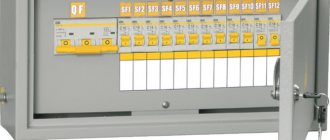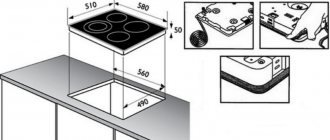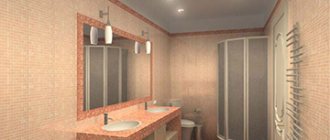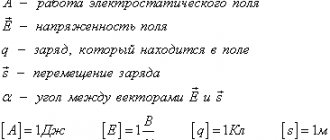High-voltage power lines are dangerous objects, and you must work near them with caution and in compliance with safety standards. Crane work near power lines is carried out only if the distance to power lines is not less than 30 m. Otherwise, approvals are required.
A reminder for the crane driver on the rules of working near power lines
Rules for operating a crane near power lines
When the crane is working near power lines closer than 30 meters, the operator needs to obtain a work permit, which will determine safe working conditions. The distance is calculated in this way.
The calculation takes into account the distance from the retractable part of the crane in any position, from the load suspended on the boom, to the vertical plane, which is formed from the projection drawn from the cable at right angles to the ground.
The overhead power line must carry at least 42 volts.
The procedure for installing a crane close to power lines
Orders from crane owners and contractors establish the procedure for organizing production near power lines, issuing instructions to workers and work permits.
When drawing up a work permit, the safety standards and rules prescribed in GOST 12.1.013-78, which was reissued in April 2001, are taken into account.
The organization issuing the order determines the duration of the action. The crane operator receives the permit immediately before work. The contractor, that is, the crane operator, is prohibited from arbitrarily choosing the location for installing the crane next to the power line and carrying out the installation itself.
This moment is marked with an entry in the waybill. If physical movement of the crane from one place to another is required, a new permit is drawn up and issued.
Work permit for crane operation near power lines - permitting documents, form
The work process must be under the direct personal supervision of the person responsible for the safety of crane work.
The person indicates to the crane operator the exact location where the crane should be installed and ensures that the working conditions specified in the issued permit are met. Then an entry is made in the crane operator’s logbook indicating that the permit has been issued.
The load should also not reach power lines - a distance of 30 meters or more
If work is carried out in the security zone of power transmission lines, within the boundaries of the breaks established by the “Rules for the Protection of High-Voltage Electric Networks,” a work permit cannot be issued without the approval of the organization operating the power lines.
Security zones near power lines
Power transmission line security zones include areas of land and space located between the planes located on the sides of the vertical projections of the outer wires onto the ground - everything is graphically drawn on the diagram above.
The higher the network voltage, the larger the indents will be:
- Up to 1 kV – 2 meters.
- From 1 to 20 kV – 10 meters.
- 35kV – 15 meters.
- 110 kV – 20 meters.
- From 150 to 220 kV – 25 meters.
- From 330 to 500 kV – 30 meters.
- 750 kV – 40 meters.
- 1150 kV – 50 meters.
In this case, the distance from the outer wires to the crane and the carried load will be:
- Up to 1 kV – 1.5 meters.
- From 1 to 20 kV – 2 meters.
- Up to 110 kV – 4 meters.
- From 110 to 220 kV – 5 meters.
- 330 kV – 6 meters.
- Up to 800 kV – 9 meters.
Attention! Do not confuse these distances with the size of security zones. They do not apply to them.
Read about the norms for the distance between power transmission line supports in our article.
When crane operators are on the staff of an energy enterprise, and the work is performed by personnel who operate electrical installations, then permission to operate self-propelled cranes near high-voltage power lines will be issued in accordance with the norms and procedures established in the industry.
Work can also be performed under unconnected electrical wires of urban transport (trolleybuses, trams). Tolerance is permitted if the distance between the contact wires and the crane boom is at least 1000 mm or 1 meter.
Gas workers portal
Safety measures when working near power linesAccording to the Rules for the Design and Safe Operation of Load-Lifting Cranes, work with jib cranes at a distance of less than 30 m from the lifting extension of the crane in any position, as well as from the load to the vertical plane formed by the projection onto the ground of the nearest power line wire, energized by more than 42 V, must be carried out according to an approval document defining safe working conditions (form according to the appendix).
The procedure for organizing work near power lines, issuing work permits and instructing workers must be established by orders of the crane owner and the work manufacturer.
The safety conditions specified in the permit must comply with the requirements of GOST 12.1.013. The validity period of the permit is determined by the organization that issued the permit. The permit must be issued to the crane operator before starting work. The crane operator is prohibited from unauthorized installation of the crane to work near the power line, which is recorded in the waybill.
The operation of the crane near power lines must be carried out under the direct supervision of the person responsible for the safe performance of work by cranes, who must also indicate to the crane operator the location of the crane installation, ensure compliance with the work conditions stipulated by the permit and make an entry in the crane operator’s logbook about the permission to work.
When performing work in the security zone of a power transmission line or within the boundaries of breaks established by the Rules for the Protection of High-Voltage Electric Networks, a work permit can only be issued with the permission of the organization operating the power line.
When operating cranes at existing power plants, substations and power lines, if work using cranes is carried out by personnel operating electrical installations, and crane operators are on the staff of the power enterprise, a work permit to work near live wires and equipment is issued in the manner established by industry standards.
The operation of jib cranes under contact wires of urban transport that have not been disconnected can be carried out provided that the distance between the crane boom and the contact wires is maintained at least 1000 mm when installing a limiter (stop) that does not allow reducing the specified distance when lifting the boom.
The procedure for operating cranes near a power transmission line made with a flexible cable is determined by the owner of the line. In this case, issuing a permit is not required.
If the crane work will be carried out in the security zone of the power line, then the work permit will be issued only with written permission from the organization operating the power line.
Security zones of a power transmission line are defined by two parallel planes, receding from the outermost wires of the line at a distance depending on the voltage in the line.
For example:
for a line under voltage up to 1 kV, at least 2 m; from 1 to 20 kV - at least 10 m; from 20 to 35 kV - 15 m; from 35 to 110 kV - 20 m; from 110 to 220 kV - 25 m; from 220 to 500 m 30 m; from 500 to 750 kV - 40 m; from 750 to 1150 kV - 55 m (see Fig. 11.4, size B).
Installation of a crane and work near a power line may be permitted under a permit, provided that the air distance from the lifting or retractable part of the crane, as well as from the load being lifted in any position, including at the maximum lift or reach of the boom, is up to the nearest energized power line wire is, at line voltage:
up to 1 kV - at least 1.5 m, from 1 to 20 kV - at least 2 m, from 35 to 110 kV - at least 4 m, 150 to 220 kV - at least 5 m, up to 330 kV - at least 6 m, from 500 to 750 kV - at least 9 m
(see figure, size A).
The smallest permissible distance from the lifting (retractable) part of the crane to the vertical plane of the projection of the outermost wire (A) and the boundary of the security zone (B).
If it is impossible to maintain the specified distance, work with the crane in the restricted zone (A) must be carried out with the power line turned off, for which a person the person who signs the work permit gives the owner of the power line a written application for disconnection indicating the time of shutdown and, having received written permission (the line is disconnected), issues a work permit to carry out the work.
The work permit indicates: the name of the organization performing the work; position and surname of the person responsible
for safe work performance; address and name of the facility; voltage in the power line; name of the organization that owns the line; number and date of permission from the owner of the power line to carry out work in the security zone; a summary of the conditions of work; permissible horizontal distance between the nearest wires and protruding parts of the boom (load); model of the crane and its crane and its brief characteristics (length and radius of the boom); type of work, start and end times. Be sure to indicate in the work permit the name of the person being instructed (crane operator and slinger) and his ID number. The signature of the person who has undergone the training and the signature of the person responsible for the safe performance of work with cranes must be included in the work permit regarding completion of training on the safe performance of work near power lines.
Installation of a self-propelled jib crane must be carried out in the following sequence:
- the person responsible for the safe performance of work with cranes checks the condition of the site (soil density, slope, presence of dangerous zones, etc.) and indicates to the crane operator the location of the crane installation;
- the crane is installed on the selected site and grounded with a portable ground electrode;
- If necessary, retractable supports are installed. The crane operator must be outside the cabin;
- the person responsible for the safe performance of work with cranes makes an entry in the crane operator’s logbook: “I checked the installation of the crane at the location indicated by me. I authorize the work";
- The crane operator raises the crane boom from the transport position to the working position.
The portable grounding is removed after installing the boom in the transport position and removing the crane from the outriggers. The crane operator is prohibited from being in the cabin while installing the crane on additional supports and removing it from the supports.
Rigging and slinging work - safety measures when working near power lines
These types of work involve different situations, for which their own requirements and standards are prescribed. Let's look at them all separately.
Moving cargo with people on it and only people
Such movements are prohibited by the Rules for the Construction of Load-Lifting Cranes and Their Operation.
Manipulation can be carried out as an exception, when instructions are issued and approval is obtained from the Russian State Technical Supervision Authority.
In this case, only an overhead crane can be used and a cabin must be equipped that will ensure complete safety of people. Cabin safety requirements are developed separately.
Since overhead cranes are stationary (with limited movement), they are not used near power lines. This means that this manipulation is completely excluded in the situation under consideration.
Overhead crane
Moving loads over buildings with people inside
The movement of goods is prohibited above the ceilings of industrial, office and residential premises in which people may currently be present.
An event can be organized, but only after obtaining permission from the Gostekhnadzor authorities and developing appropriate measures to ensure the complete safety of people and property.
Power line security zone. Carrying out work in the security zone.
When carrying out construction work in the dangerous zone of existing power lines, it is necessary to be guided by the following regulatory documents:
1. The admission of workers to work in the security zone of an energized power line is carried out (after receiving permission from the operating organization) by the permitting staff of the organization operating the power line and the Work Performer. At the same time, the Work Foreman provides access to the performers of each brigade of this site, with the issuance of a formalized Work Permit to carry out work in the security zone of the power line.
2. People who are not directly related to the work being carried out are not allowed to stay at the work site in the security zone.
3. When a thunderstorm approaches, the person responsible for the safe performance of work is obliged to stop work and remove all workers from the work area to a distance of no closer than 25 m from the power line.
During a thunderstorm, work and the presence of people in the protection zone are PROHIBITED.
4. It is NOT ALLOWED to operate lifting machines in wind conditions that cause the loads or loose cables and ropes used to lift the load to reach an unacceptable distance from live parts.
5. The operation of construction machines in the security zone of power lines is permitted if the drivers have a work permit and when the voltage is completely removed by the organization operating this power line and the II electrical safety group.
6. If it is impossible to relieve the voltage, construction and installation work in the security zone of power lines is allowed only:
— with written permission from the operating organization;
— upon preliminary issuance of work permits to machine operators and builders;
- under the guidance and continuous supervision of a responsible person from among the engineering personnel appointed from SMU-4, and having a qualification group in electrical safety equipment of at least III;
- provided that everyone working in the security zone can provide first aid to victims of electric current and have the appropriate electrical safety group.
7. The boundaries of the security and danger zones are set on both sides of the outermost wires for the appropriate voltage in accordance with GOST 12.1.051.
The boundaries of zones in which there is a danger of electric shock regulate the distances from unfenced uninsulated parts (electrical equipment, cables, wires) or from the vertical plane formed by the projection onto the ground of the nearest energized overhead power line wire, and are presented in Table 18.
8. To avoid damage to existing power lines during construction, security zones are installed on both sides of the outer wires according to the data in Table 19.
9. The passage of vehicles, lifting machines and mechanisms in the security zone of overhead lines, as well as the installation and operation of machines and mechanisms must be carried out under the supervision of one of the employees of local electrical networks or a work contractor with clearance group IV, and when performing construction and installation work in the security zone Overhead lines - under the supervision of the responsible manager of local electrical networks or a work contractor with access group III. In the “Separate instructions” line of the permit, an entry must be made about the appointment of the employee responsible for the safe performance of work with cranes, indicating the position, surname and initials.
10. When driving under overhead lines, the lifting and sliding parts of lifting machines and mechanisms must be in the lowered position. It is allowed to move lifting machines within the workplace on level ground with a raised working element without a load and people on the lifting or sliding part, if such movement is permitted according to the factory instructions and it is not required to drive under undisconnected tires and overhead line wires. Cars, lifting machines and mechanisms must pass under overhead lines in places where the wires have the least sag (at the supports).
11. When installing a machine equipped with an excavator bucket at a work site, the Work Foreman, together with the permitter, must determine the required sector of boom movement. Before the start of work, this sector should be limited by poles with flags, and at night, by signal lights.
12. Installation and operation of lifting mechanisms directly under energized overhead power lines with voltage up to 35 kV inclusive is not allowed.
The operator in charge must install the lifting machine (mechanism) on outriggers and transfer its working part from the transport position to the working position. It is not permitted to involve other workers for this purpose. In the dark, work with lifting machines can only be carried out when the power lines are turned off and the workplace and power lines are sufficiently illuminated.
13. The movement of construction vehicles and mechanisms under power lines is allowed if the machine has a height from the road or ground mark of no more than 5 m when traveling on highways and 3.5 m when traveling on grader and country roads and without roads.
14. When driving, installing and operating vehicles, lifting machines and mechanisms, the distance from lifting and sliding parts, slings, load-handling devices, loads to live parts that are energized must be at least 4 meters.
Carrying out work in the security zones of overhead lines using various lifting machines and mechanisms with a retractable part is permitted only if the air distance from the machine (mechanism) or from its retractable or lifting part, as well as from its working body or lifted load in any position (including during the greatest rise or reach) to the nearest live wire will be no less than that indicated in Table 20.
15. During all work within the security zone of the overhead line without removing the voltage, mechanisms and lifting machines must be grounded. Load-lifting machines on caterpillar tracks do not need to be grounded when installed directly on the ground.
16. When lifting machines and mechanisms are operating, it is NOT ALLOWED for people to remain under the load being lifted, as well as in close proximity (closer than 5 m) to tensioned wires (cables), stops, fasteners and operating mechanisms.
17. In the event of contact between a crane boom or a lifting mechanism and live parts that are energized, or an electrical discharge occurs between them, the driver must take measures to quickly break the contact that has arisen and remove the moving part of the mechanism from live parts to a distance of at least 4 meters, warning surrounding workers that the mechanism is energized.
Moving and lifting dangerous goods
Particular attention to compliance with safety precautions near power lines, and not only, must be shown when moving dangerous goods. These include substances, products and materials that have properties that, during movement, can, under certain conditions, lead to death, poisoning, injury, illness, radiation, fire, explosion, damage to equipment and buildings.
Delivery of dangerous goods
Only people who have undergone a preliminary medical examination are allowed to perform such work. Their health category must correspond to the nature of their activity.
All requirements are determined by state standards. Also, crane operators and other personnel undergo appropriate technical training.
After passing it, certification occurs. This class of workers must be trained to provide first aid.
Moving cargo with multiple cranes
This is a complex operation that may also need to be performed near power lines. It can only be carried out under the direct supervision of the person responsible for the safety of cranes.
They also focus on the production design or technological map, which provides acceptable slinging schemes, cargo movement, applied safety measures and the procedure for carrying out work.
Important! Before work, it is necessary to calculate the load that will be placed on each crane. Naturally, it should not exceed the maximum permissible values.
It is recommended to use the same type of cranes and traverses. The main danger arises when loads are distributed unevenly between cranes. Uncoupling of the slings or swinging of the load may also occur, because the ropes are often in an inclined position.
Before work, each crane operator is instructed about the speed of lifting the load, the maximum height and the conventional signals that will be used.









